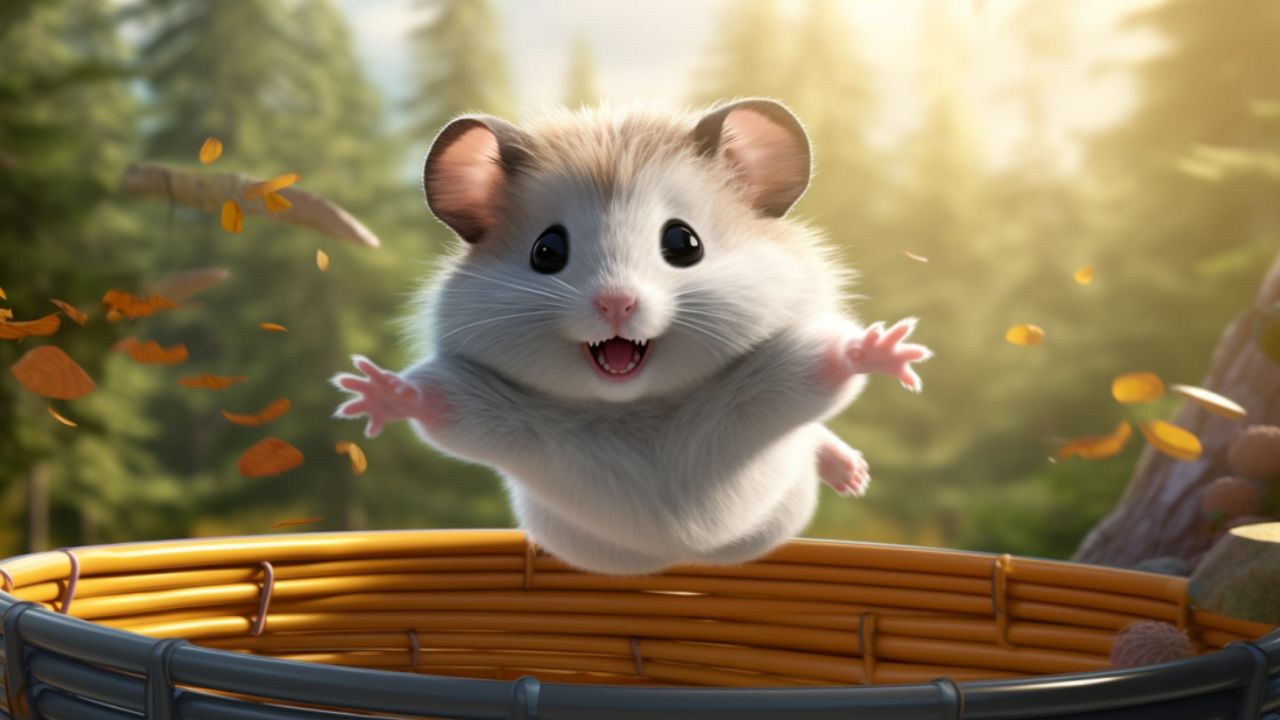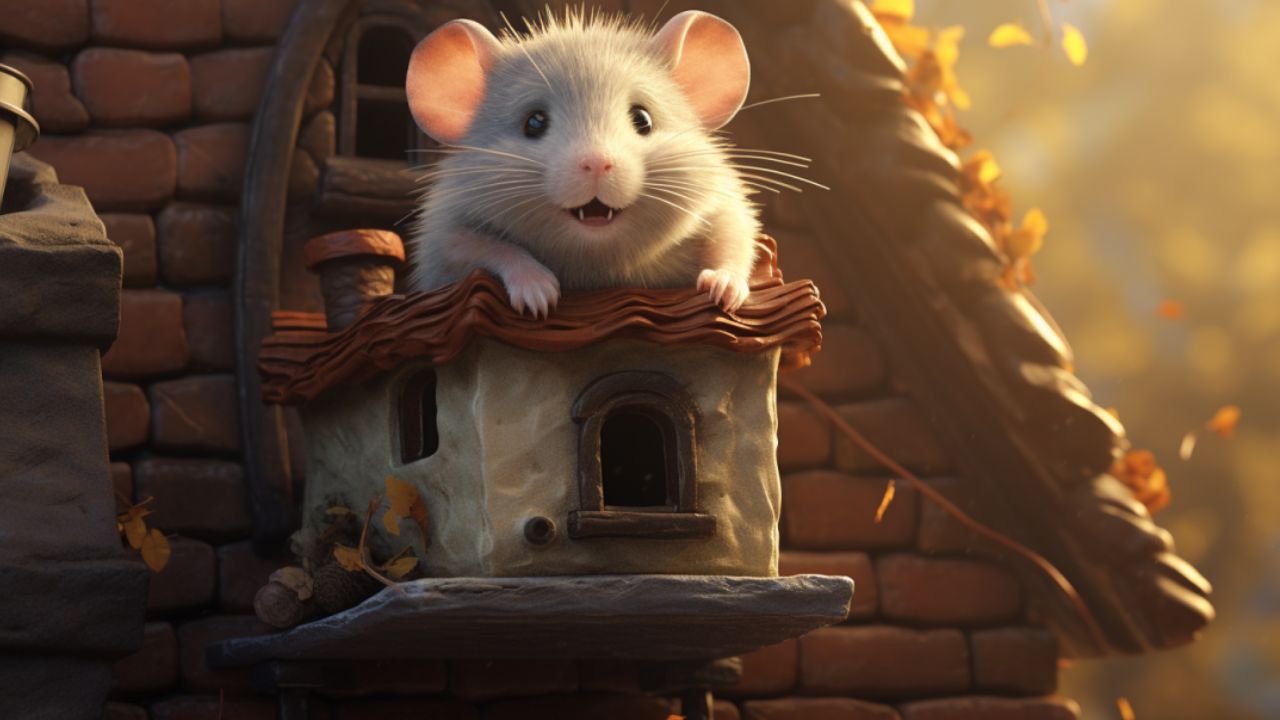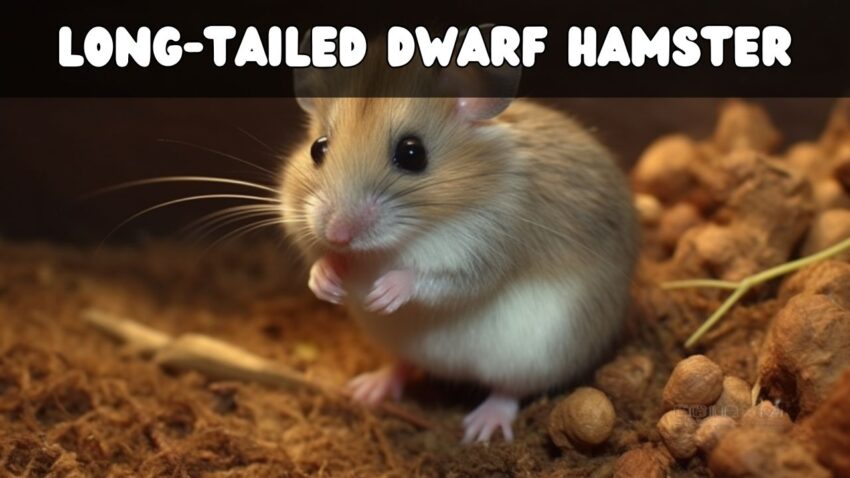In the expansive world of rodent pets, the Long-tailed Dwarf Hamster holds a special place. With a unique combination of physical allure and charming behavior, this species is nothing short of captivating. The intrigue doesn’t just stop at their appearance; there’s a rich tapestry of history, behavior, and characteristics that make them a preferred choice for many. Within this comprehensive guide, we’re going to embark on a fascinating journey, exploring every nook and cranny of the Long-tailed Dwarf Hamster’s world.
A Closer Look at the Long-tailed Dwarf Hamster
The Long-tailed Dwarf Hamster is not just another rodent; it’s a testament to nature’s wonders. Originating from specific regions, these creatures have transitioned from the wild terrains to the cozy confines of our homes. Their noticeable tail, often a topic of intrigue, is just the tip of the iceberg. Beyond the physical, their endearing behaviors and habits make them an endlessly fascinating subject of study and admiration.
Diving Deep into the World of the Long-tailed Dwarf Hamster
The subsequent chapters of our exploration present an exhaustive journey into the dynamic life and times of the Long-tailed Dwarf Hamster. Beginning with the fascinating tale of their evolutionary trajectory—tracing back to their ancestral roots and understanding their adaptation over eons—we will segue into the minute intricacies that define their daily existence. Are these creatures truly night owls, thriving in the moonlight, or do they embrace the warmth of the sun? What drives their actions, behaviors, and the little quirks that make them such a delight to observe? From discerning the best practices in their care to unraveling the mysteries behind their unique behaviors, this guide promises answers to all these pressing questions, and many more that might be brewing in the curious minds of our readers.
Overview

The fascinating world of rodents boasts a multitude of species, each with its unique attributes and stories. Within this realm, the Long-tailed Dwarf Hamster has carved a niche for itself, known not only for its distinctive physical characteristics but also its rich historical backdrop and current status as a favored pet.
Diving Deep into the Annals of History
When we trace back the lineage of the Long-tailed Dwarf Hamster, we’re embarking on a journey that spans many millennia. These creatures have ancient origins, having roamed vast and varied terrains long before they found their way into our homes. Researchers and rodentologists have unearthed evidence suggesting that ancient varieties of these hamsters once roamed parts of Asia, adapting to different terrains, from rocky outcrops to dense forests. Their journey is emblematic of nature’s ever-evolving dance of adaptation, resilience, and survival.
While the exact evolutionary timeline of the Long-tailed Dwarf Hamster remains a topic of scientific exploration, fossil records and genetic studies hint at a lineage that’s both diverse and adaptive. Over the ages, they’ve faced challenges ranging from climatic shifts to predation, yet they’ve continued to thrive, evolve, and expand their territories.
A Global Household Sensation
Fast forward to the present day, and the Long-tailed Dwarf Hamster stands out as one of the crown jewels in the pet industry. Their ascent to domestic popularity didn’t happen overnight. It was a gradual process, catalyzed by a blend of their manageable size, quirky behaviors, and of course, that signature long tail, which sets them apart from other hamster breeds. These attributes made them a favorite among pet enthusiasts, researchers, and educators alike.
The Long-tailed Dwarf Hamster’s appeal isn’t restricted to its looks. Their sociable nature, coupled with a keen sense of curiosity, makes them ideal for families. Their playful antics and sometimes mischievous behaviors have been the source of many a heartwarming story among pet owners. It’s not uncommon to hear of these little rodents forming deep bonds with their human caregivers, further solidifying their position as cherished family members.
Beyond Domestic Walls: The Wild Chronicles
However, the story of the Long-tailed Dwarf Hamster isn’t limited to the cozy confines of our homes. In the wild, they are a spectacle of nature’s brilliance. Navigating through their natural habitats, they play a pivotal role in their ecosystems. Whether it’s aerating the soil through their burrowing actions or being a vital part of the food chain, their contributions are manifold.
Documentaries and wildlife expeditions have showcased the Long-tailed Dwarf Hamster’s wild side, capturing moments of them foraging, evading predators, and even engaging in communal activities. Observing them in their natural environment offers a contrasting perspective, reminding us of their dual identity as both wild creatures and domestic companions.
In totality, the Long-tailed Dwarf Hamster embodies the blend of historical significance, contemporary charm, and ecological importance. As we navigate the subsequent sections, we’ll delve deeper into each facet of their existence, unraveling the many layers of their captivating story.
Natural Habitat

The world of rodents is vast, intricate, and incredibly diverse, with every species adapted to its unique niche in the ecological fabric. The Long-tailed Dwarf Hamster, a jewel in this vast mosaic, thrives in distinct natural habitats that are as captivating as the creature itself.
Mapping the Geographic Footprint
The natural stomping grounds of the Long-tailed Dwarf Hamster stretch across select regions of Asia. Predominantly, their habitat can be traced back to certain parts of northern China and Mongolia. In these regions, they’ve established themselves, marking territories and creating intricate burrows that serve as both homes and strategic hideouts from potential threats.
The expansive steppe regions, characterized by their grassy plains devoid of tall trees, serve as the primary residence for these hamsters. The absence of tall trees means fewer birds of prey, making these open landscapes slightly safer for these tiny ground-dwellers. These vast plains, interspersed with occasional shrubs and sparse woodland, provide them with both food and refuge.
Climate and Conditions: A Tale of Adaptation
Surviving in their natural habitat requires more than just geographical convenience. The Long-tailed Dwarf Hamster’s native regions are characterized by a continental climate, which translates to cold winters and warm to hot summers. With temperature fluctuations ranging from freezing cold to searing heat, it’s a testament to their resilience that they’ve adapted to these extremes.
During the colder months, the Long-tailed Dwarf Hamster employs several strategies to endure the harsh conditions. Their fur thickens, providing an added layer of insulation. Additionally, they hoard food in their burrows, ensuring a steady supply during times when foraging becomes a challenge.
The terrain itself, predominantly grassland, offers a bounty of seeds and plants. It’s not uncommon to find these hamsters scurrying around, collecting seeds, which they store in their cheek pouches, transporting them back to their underground caches.
Other Environmental Interactions
Apart from the physical aspects of their habitat, Long-tailed Dwarf Hamsters also have dynamic interactions with other species. These interactions, whether with predators or co-habitants, shape their behaviors and daily routines. For instance, to evade daytime predators, they’ve adopted a primarily crepuscular and nocturnal lifestyle, venturing out during the twilight hours or under the cover of darkness.
Water sources, though sporadic in these regions, play a crucial role in their habitat. Proximity to freshwater sources can influence their burrowing locations, given the importance of hydration, especially during the warmer months.
In summation, the natural habitat of the Long-tailed Dwarf Hamster is a vibrant tapestry of geographic, climatic, and ecological factors. Each element plays a pivotal role in shaping their behaviors, survival strategies, and overall life cycle, offering a mesmerizing glimpse into nature’s grand design.
Physical Characteristics

The Long-tailed Dwarf Hamster, while sharing similarities with its rodent kin, boasts its own set of distinct physical attributes. These not only make it stand out but also equip it with unique advantages that aid its survival in the wild. From its size to its mesmerizing color patterns, each feature has evolved with purpose and precision.
Size and Stature: Small but Mighty
When we think of hamsters, the image of a small, pudgy creature often comes to mind. However, the Long-tailed Dwarf Hamster tends to be a tad more streamlined. Adult individuals typically measure between 7 to 10 centimeters in length, making them one of the smaller members of the hamster family. Their weight ranges from 20 to 25 grams. Their build is compact, a design efficiency that helps them navigate the grassy terrains with agility and speed.
The tail, from which they derive their name, is longer compared to other hamster species, usually accounting for approximately a third of their total body length. This elongated tail aids in balance, especially when they’re darting around their natural habitats, avoiding predators or chasing after potential meals.
Color and Coat: A Symphony of Shades
The coat of the Long-tailed Dwarf Hamster is a fascinating blend of colors. Predominantly, they don an agouti pattern, a mix of gray-brown fur with individual hairs tipped in a darker shade. This natural coloring provides them with excellent camouflage amidst the grasslands and shrubs of their habitat. Some individuals, especially those bred in captivity, might exhibit different color mutations, such as white or cream, though these are less common in the wild.
A distinguishing feature of the Long-tailed Dwarf Hamster is the white belly fur, contrasted sharply against the darker hues of its back and sides. The fur is dense and soft to touch, a feature that thickens in colder months providing the necessary insulation against the chill.
Their eyes, dark and shiny, are always alert, scanning their surroundings for potential threats or opportunities. The whiskers, long and sensitive, act as sensory tools, guiding them in the dark and aiding in the detection of nearby objects.
Distinguishing Features: More Than Meets the Eye
Upon a closer look, one might notice the cheek pouches, a hallmark of the hamster species. These stretchy sacs extend from their cheeks down to their shoulders, allowing them to transport and hoard significant amounts of food back to their burrows.
Another noteworthy feature is their ears. Proportionally large compared to their head, these ears are not just for hearing; they play a crucial role in thermoregulation. By adjusting the blood flow to their ears, the Long-tailed Dwarf Hamster can regulate its body temperature, a handy adaptation for the temperature extremes of their habitat.
In wrapping up this exploration of their physical characteristics, it’s clear that every facet of the Long-tailed Dwarf Hamster’s design is a marvel of evolution, fine-tuned for survival, efficiency, and, undoubtedly, charm.
Behavior and Temperament

The Long-tailed Dwarf Hamster, like all creatures, has evolved a set of behaviors tailored to its environment, instincts, and the challenges of survival. This unique cocktail of characteristics makes them a fascinating study and a delightful pet to observe and interact with. Their daily routines, social habits, and overall disposition offer a window into the intricate world of rodent behavior.
Daily Activities: Night Owls with a Twist
Long-tailed Dwarf Hamsters predominantly display crepuscular behavior. This means they are most active during twilight hours – both at dawn and dusk. While many mistake them for purely nocturnal creatures, these hamsters have adapted to be most active when the temperature is moderate and predators are less vigilant.
During these active hours, they engage in a variety of activities. These range from foraging for food, grooming themselves, and playfully zipping around their habitats. When kept as pets, they might be seen running on their exercise wheels, burrowing in their bedding, or navigating an intricate maze of tunnels.
Social Behavior: Solitary Yet Curious
By nature, the Long-tailed Dwarf Hamster is a rather solitary animal, especially the males. In the wild, they often establish individual territories which they defend fiercely from intruders. While they can tolerate short interactions, prolonged cohabitation, especially between adults of the same gender, can lead to territorial disputes and aggression.
However, their solitary nature doesn’t make them antisocial towards humans. In fact, with gentle and consistent handling, they can grow quite accustomed to human interaction. They are curious creatures, always keen to explore new environments and stimuli, making them delightful companions for observant pet owners.
Unique Traits: More than Just a Pretty Face
While many of their behaviors are shared with other hamster species, there are some specific quirks that set the Long-tailed Dwarf Hamster apart. For one, they have a fascinating hoarding behavior. Using their cheek pouches, they can gather and transport significant amounts of food back to their burrows. Over time, they amass small stockpiles, which they return to and consume later.
Another delightful trait is their ability to stand upright on their hind legs, especially when they are alert or curious. This stance, combined with their long tail for balance, gives them a unique “meerkat-like” appearance when they’re scanning their surroundings.
Their vocal range is another interesting aspect. They can produce a series of chirps, squeaks, and even high-pitched screams when threatened or agitated. These vocalizations, though not always heard, provide valuable insights into their emotional state.
In conclusion, the Long-tailed Dwarf Hamster is not just another rodent; it’s a complex creature with a rich tapestry of behaviors. Whether in the wild or in the comfort of a loving home, their actions and reactions provide a continuous source of wonder and amusement.
Diet and Nutrition

For any pet enthusiast or animal caregiver, understanding the dietary preferences and nutritional needs of an animal is paramount. Proper nutrition ensures good health, longevity, and the overall well-being of the creature in question. The Long-tailed Dwarf Hamster, while a small member of the rodent family, has specific dietary requirements that mirror its natural foraging habits in the wild. Let’s explore the ins and outs of what to feed these tiny wonders and what should be kept away from their dinner plates.
Daily Dietary Staples: Foraging Favorites
In their natural habitat, Long-tailed Dwarf Hamsters are opportunistic omnivores. This means that they consume a variety of foods based on availability. Their diet predominantly consists of seeds, grains, and various plant materials. They have an affinity for millet, sunflower seeds, and barley. Fresh vegetables like broccoli, spinach, and carrots also form a crucial part of their diet, offering them necessary vitamins and minerals.
Aside from their plant-based diet, they occasionally indulge in protein-rich foods. In the wild, this could translate to small insects, worms, or even larvae. For pet hamsters, this protein requirement can be met by offering them mealworms, crickets, or even a tiny bit of boiled chicken or egg once in a while.
Nutritional Nuances: Beyond Basic Bites
Just feeding them isn’t enough. It’s vital to understand the unique nutritional needs of the Long-tailed Dwarf Hamster. They require a fine balance of protein, fats, and fiber. For example, their protein intake should ideally be between 15-20% of their total diet, with fat making up about 5-7%.
While seeds are a favorite, one must be cautious not to overfeed fatty seeds like sunflower or pumpkin seeds. These should be treats rather than regular dietary items. Additionally, providing them with a good quality hamster pellet ensures that they receive a balanced and comprehensive diet, filling any nutritional gaps that might arise from feeding them other foods alone.
Foods to Forgo: Safety First
While they have a varied diet, there are certain foods that should be avoided when feeding a Long-tailed Dwarf Hamster. Some of these foods can be toxic, while others might cause digestive distress:
- Citrus Fruits: Due to their acidic nature, citrus fruits can upset their stomach.
- Onions & Garlic: These can be toxic to many rodents, including our Long-tailed friends.
- Chocolate & Sweets: These are not only unhealthy but can be toxic.
- Raw Beans & Potatoes: These can be hard to digest and might contain toxins when raw.
Lastly, always introduce new foods in small quantities and observe for any adverse reactions. If any food seems to upset their system or if they appear disinterested, it’s best to remove that item from their diet.
In essence, feeding a Long-tailed Dwarf Hamster requires a mix of knowledge and observation. By understanding their dietary preferences and nutritional needs, and being cautious about potentially harmful foods, you can ensure a happy and healthy life for these delightful little creatures.
Housing and Environment

The living conditions of any pet play a vital role in determining its overall well-being, happiness, and lifespan. The Long-tailed Dwarf Hamster, being a unique and delicate species, has particular needs when it comes to housing and environment. While they might be tiny in stature, their lively nature and innate habits require a home setup that not only ensures their safety but also keeps them mentally and physically stimulated.
The Ideal Abode: Cage Recommendations
When selecting a home for a Long-tailed Dwarf Hamster, size matters. These active rodents enjoy scampering about, tunneling, and exploring their surroundings. Therefore, it’s essential to choose a cage that provides them ample room to play and exercise.
For a single Long-tailed Dwarf Hamster, a minimum cage size of 24 inches in length, 12 inches in width, and 12 inches in height is recommended. However, the larger the cage, the better. If you plan to house multiple hamsters together, you should increase the cage size proportionally, ensuring each hamster has ample space to claim as its own and reduce potential territorial disputes.
Opt for cages that have a solid base to hold bedding comfortably. Wire cages with horizontal bars are beneficial, as they offer good ventilation and climbing opportunities. However, ensure the spacing between the bars is no more than 1/4 inch to prevent escape and potential injury.
Bed of Dreams: Choosing the Right Bedding
Bedding is more than just a decorative element in a hamster’s cage. It’s their playground, toilet, and bed, all in one. Thus, the importance of choosing the right bedding material cannot be overstated.
Paper-based beddings are a top choice for Long-tailed Dwarf Hamsters. They are soft, absorbent, and largely dust-free, ensuring a clean environment. Aspen wood shavings are another suitable option. However, avoid cedar and pine shavings, as these can release fumes that are harmful to hamsters.
A depth of 2 to 3 inches of bedding is ideal as it allows the hamsters to burrow and create tunnels, a natural behavior that they immensely enjoy. Regularly clean and replace the bedding to maintain a hygienic environment. Spot clean daily by removing soiled bedding and do a complete change at least once a week.
Creating the Perfect Environment
The environment inside the cage should mimic, as closely as possible, the natural habitat of the Long-tailed Dwarf Hamster. Here’s how you can achieve that:
- Temperature & Humidity: Maintain a temperature range of 65°F to 75°F. Avoid placing the cage near windows, direct sunlight, or drafts. A moderate humidity level is essential to prevent respiratory issues.
- Toys & Accessories: Add a variety of toys, like hamster wheels, tunnels, and chew toys. This keeps the hamster engaged and aids in physical exercise.
- Hideouts: Provide small houses or hideouts, ensuring your hamster has a private spot to retreat and rest.
- Food & Water: Always keep fresh water available using a water bottle attached to the cage. Place ceramic bowls for food to prevent tipping.
By investing time and effort in creating the ideal housing and environment for your Long-tailed Dwarf Hamster, you pave the way for a content, healthy, and joy-filled life for your tiny companion. After all, a comfortable hamster makes for a delightful pet, bringing cheer and charm to any home.
Health and Wellness

Long-tailed Dwarf Hamsters, with their vibrant energy and swift movements, are a joy to observe. However, like all living creatures, they’re susceptible to certain health issues. Being attentive to their health and well-being not only ensures they lead a comfortable life but also helps in early detection and prevention of potential ailments.
Common Health Concerns and Preventive Measures
Just as with any pet, being proactive can make a significant difference in the overall health of your Long-tailed Dwarf Hamster. Here are some prevalent conditions to be aware of:
- Respiratory Infections: These are common in hamsters, and symptoms include sneezing, wheezing, and nasal discharge. Keeping their environment clean, ensuring adequate ventilation, and avoiding drafts can help prevent such infections.
- Wet Tail: This is a severe diarrheal disease, often resulting from stress or bacterial infections. It’s vital to separate affected hamsters, maintain cleanliness, and consult a vet immediately if you suspect your hamster has wet tail.
- Dental Problems: Hamster teeth grow continuously. If they don’t wear down, they can become overgrown and cause eating difficulties. Offering chew toys and hard foods can help keep their teeth in check.
- Tumors: Older hamsters might develop tumors, especially around their flanks or abdomen. Regular check-ups and early detection can lead to effective treatment.
- Skin Conditions: Mites, allergies, or fungal infections can cause skin issues. Keep an eye out for excessive scratching, hair loss, or redness.
To prevent many of these ailments, ensure a balanced diet, a clean environment, and regular exercise for your hamster. Also, periodic health check-ups by a vet can be beneficial, even if your hamster seems perfectly healthy.
Recognizing Signs of Distress
Being observant can make all the difference when it comes to the health of your Long-tailed Dwarf Hamster. Here’s what to watch out for:
- Behavioral Changes: A sudden shift in behavior, like increased aggression, lethargy, or change in eating habits, could indicate a problem.
- Physical Abnormalities: Swellings, lumps, sores, or any unusual physical change should not be overlooked.
- Difficulty Moving: If your hamster struggles to move, limps, or appears uncoordinated, it might be in pain or distress.
- Discharge: Any discharge from the eyes, nose, or mouth can be a sign of infection or another underlying health issue.
Consulting a Veterinarian
If you notice any signs of distress or think something might be amiss with your Long-tailed Dwarf Hamster, it’s crucial to consult a veterinarian experienced in treating small mammals. Early intervention can often lead to a quicker recovery and better outcomes.
Your hamster’s health is in your hands. By being observant, knowledgeable, and proactive, you can ensure that your tiny companion enjoys a life full of happiness, comfort, and optimal well-being. After all, a healthy hamster is a happy hamster!
Breeding

Breeding Long-tailed Dwarf Hamsters, like breeding any pet, requires a nuanced understanding of their natural behaviors, physical needs, and the responsibilities attached. It’s not just about pairing two hamsters and hoping for the best. Ensuring the health and safety of both the parents and the offspring involves preparation, vigilance, and a commitment to ethical practices.
Understanding the Nuances of Breeding
Long-tailed Dwarf Hamsters reach sexual maturity around two months of age, but it’s often advised to wait a bit longer to ensure they’re physically mature enough for the breeding process. When considering breeding:
- Choosing a Pair: Not every hamster is suitable for breeding. It’s essential to select healthy individuals with no known genetic disorders to reduce the risk of health issues in the offspring.
- Mating Behavior: Female Long-tailed Dwarf Hamsters come into estrus (become receptive to mating) every four days. When introduced, if the female is receptive, mating will typically occur. However, always monitor their interaction to ensure no aggressive behavior ensues.
- Gestation and Birth: The gestation period for these hamsters is around 20 to 30 days. As the delivery approaches, the female will often become more active, building a nest using the bedding material. Once the pups are born, it’s crucial not to disturb the nest, as this can stress the mother and lead to adverse behaviors like cannibalism.
- Post-Birth Care: The pups will be hairless, blind, and deaf at birth, entirely dependent on their mother. They’ll start developing fur by the end of the first week and will typically open their eyes by day 14. It’s essential to provide supplemental nutrition to the mother during this time, like protein-rich foods, to support her and her growing pups.
Ethical Considerations in Breeding
Breeding pets come with a significant responsibility. It’s not just about producing cute baby hamsters; it’s about ensuring the well-being of all animals involved:
- Avoid Overbreeding: Continuously breeding a female hamster can have detrimental effects on her health. It’s crucial to give her adequate rest between litters.
- Responsible Homing: Before breeding, consider where the offspring will go. Every baby hamster needs a loving, safe home. Be ready to vet potential adopters and ensure they’re prepared for the responsibility of pet ownership.
- Genetic Diversity: Breeding hamsters from the same family line can lead to inbreeding and potential health issues in the offspring. Ensure genetic diversity by sourcing hamsters from different lineages.
- Health Check-ups: Regularly consult a veterinarian to ensure both the parent hamsters and the pups are healthy, especially if you notice any signs of illness or distress.
Breeding Long-tailed Dwarf Hamsters can be a rewarding experience when done right. However, always prioritize the animals’ well-being above all else. Remember, with the joy of seeing new life comes the duty of ensuring that life is valued, nurtured, and respected.
FAQs

When it comes to caring for the delightful Long-tailed Dwarf Hamster, many enthusiasts and potential owners often have a plethora of questions. This section aims to address some of the most frequently asked questions regarding their care, behavior, and overall well-being.
1. How Long Do Long-tailed Dwarf Hamsters Live?
The average lifespan of a Long-tailed Dwarf Hamster is around 2 to 2.5 years when cared for properly in captivity. Their lifespan can be influenced by factors like genetics, diet, and overall living conditions. Providing them with a nutritious diet, a clean environment, and regular check-ups can help ensure they live a full, healthy life.
2. Are They Sociable Animals? Can I Keep Two Together?
Long-tailed Dwarf Hamsters, in contrast to some other hamster species, can be sociable and might appreciate the company of another of their kind. However, it’s best to introduce them when they’re young and to monitor their interactions closely. Keep in mind that even hamsters that have lived peacefully together might have disputes, so always ensure each hamster has its own space and resources.
3. What Should I Feed My Long-tailed Dwarf Hamster?
A balanced diet for these hamsters typically includes commercial hamster pellets, supplemented with fresh fruits and vegetables. They also appreciate the occasional protein boost, which can come from foods like boiled eggs or mealworms. Always ensure fresh water is available and avoid giving them sugary or fatty treats.
4. How Often Should I Clean Their Cage?
For optimal health and happiness, it’s recommended to clean their cage once a week. This involves removing old bedding, wiping down surfaces, and adding fresh bedding. It’s also a good idea to spot clean daily by removing soiled bedding and uneaten food.
5. Are Long-tailed Dwarf Hamsters Nocturnal?
Yes, like most hamster species, Long-tailed Dwarf Hamsters are primarily nocturnal, which means they are most active during the night. It’s essential to respect their sleep schedule and avoid waking them during the day unless necessary.
6. How Can I Tell If My Hamster Is Sick?
Signs of illness in hamsters can include lethargy, loss of appetite, difficulty breathing, wet tail, hair loss, or changes in behavior. If you suspect your hamster might be unwell, it’s always best to consult with a veterinarian experienced in treating small animals.
Caring for a Long-tailed Dwarf Hamster can be an incredibly rewarding experience. By being well-informed and proactive in their care, you can ensure that your furry friend leads a happy, healthy life. If ever in doubt, seeking advice from professionals or experienced hamster owners can be invaluable.
Final Thoughts

The world of the Long-tailed Dwarf Hamster is indeed a captivating one, encompassing a range of characteristics, behaviors, and needs that make them unique. From their distinctive physical traits and native habitats to their quirky behaviors and specific care requirements, understanding these lovely creatures in depth allows us to provide them with a life full of comfort, health, and happiness.
Reflecting on Our Journey
As we ventured through this comprehensive guide, we’ve unearthed the rich history of the Long-tailed Dwarf Hamster, delved into the nuances of their behavior, and underscored the significance of a balanced diet, proper housing, and timely health check-ups. Each segment was designed to offer both novice and seasoned hamster enthusiasts valuable insights into the best care practices for these petite wonders.
Pass It On: Share the Knowledge
The joy and wonder that these tiny mammals bring into our lives are immeasurable. However, with pet ownership comes great responsibility. If this guide has enlightened or enriched your understanding of the Long-tailed Dwarf Hamster, we urge you to share this knowledge. By disseminating accurate information, we can collectively ensure that every Long-tailed Dwarf Hamster out there receives the love, care, and respect they truly deserve.
In closing, whether you’re considering adopting one of these delightful rodents or are already a proud hamster parent, always remember the importance of informed and compassionate care. Adopt responsibly, cherish every moment, and let’s work together to give these tiny beings the best life possible.

